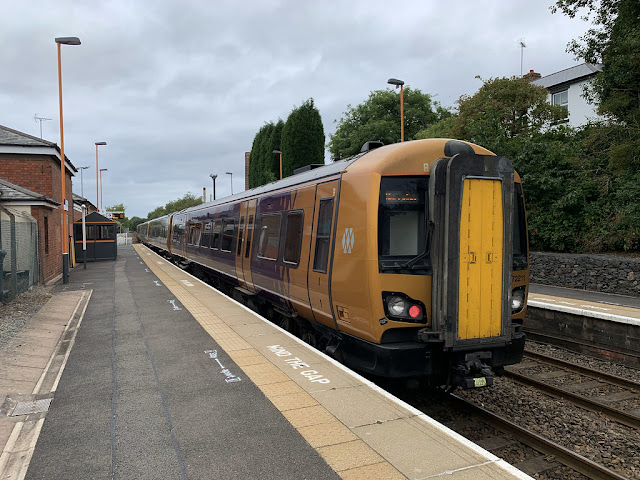Gospel Oak is a stop on the London Overground North London Line between
Hampstead Heath and
Kentish Town West. It is also the Western terminus of the Gospel Oak to
Barking Line (known as the GOBLIN).
 |
| LO 378 258 arrives |
| Information |
| Type: |
Transport for London (London Overground) |
| Station code: |
GPO |
| Opened: |
1860 |
| Platforms: |
3 |
The station was opened in 1860 by the Hampstead Junction Railway as
Kentish Town [1]. It was renamed Gospel Oak in 1867. Between 1926 and 1981 there was no interchange with the line to Barking, though the platform was used for excursions from to time during the 1930s. A new platform was built for the resumption of services [2].
The North London Line was electrified by the LNWR in 1916, it was converted to 25kV AC overhead in 1996. The line to Barking was electrified in 2018. The station is above street level with stairs and lifts down to the street.
 |
| Platform buildings |
[2] Ibid. Fig. 75






































